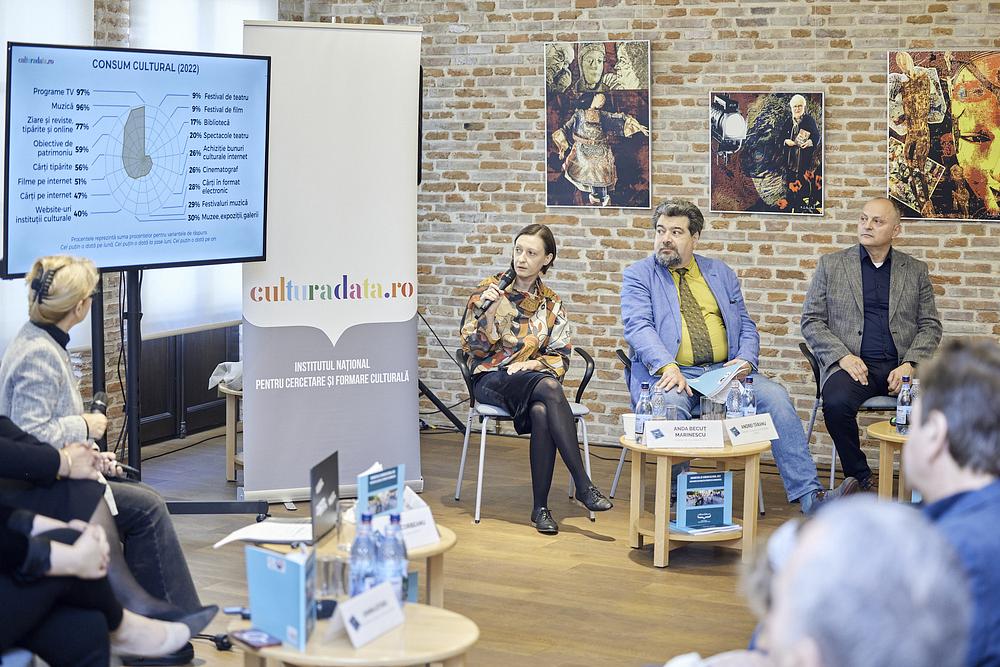Cultural activities still below pre-pandemic levels in Romania, survey shows



A survey regarding cultural activities in Romania shows decreased levels of attending theater performances, watching movies in theaters, visiting libraries to read or borrow books, and visiting museums, exhibitions, or art galleries compared to pre-pandemic levels.
Romania’s National Institute for Cultural Research and Training has launched the 2022 "Cultural Consumption Barometer. Cultural Participation and Democratic Perspectives," as part of the National Theater Festival, assessing the changes in cultural consumption practices, emphasizing their characteristics among young people, and, for the first time, analyzing the relationship between culture and democracy.
"The Barometer is back after the pandemic period when we replaced it with a study measuring intentions for cultural participation. However, we have noticed that the trends persist, so we are doing better than in 2021, we are on an upward trend, but we have not yet reached the consumption level of 2019," said Associate Professor Dr. Carmen Croitoru, general director of INCFC, coordinator, and co-author of the study.
The barometer shows decreases in public cultural consumption for attending theater performances, which decreased from 29% in 2019 to 20% in 2022, watching movies in theaters, which decreased from 35% in 2019 to 26% in 2022, visiting libraries to read or borrow books, which decreased from 28% in 2019 to 17% in 2022, and visiting museums, exhibitions, or art galleries, which dropped from 38% in 2019 to 30% in 2022.
The only increase is in visiting historical monuments or archaeological sites at least once a year (59% of respondents in 2022, compared to 45% in 2019).
The results of the Barometer show that, concerning cultural activities in the private sphere carried out by respondents at least once a year, there has been an increase in audio-visual practices: music consumption increased to 96% in 2022, compared to 85% in 2019, and watching TV programs increased to 97% in 2022, compared to 92% in 2019. The Barometer also highlights an increase in internet usage to 85% in 2022, compared to 70% in 2019, and a percentage of social media usage of 88% in 2022, compared to 79% in 2019.
Among internet activities, several significant increases were recorded: 26% of respondents bought books, CDs, theater tickets, two tickets for cultural events, and so on in 2022, compared to 16% in 2019, 51% of respondents watched movies or TV programs online (Netflix, HBO GO, Voyo, etc.) compared to 27% in 2019, and visiting websites of museums, libraries, festivals, theaters, and cultural event pages increased to 40% in 2022, from 12% in 2019.
Data regarding book consumption indicates that in 2022 56% of respondents read printed books, and 28% read electronic books.
According to the Barometer, 94% of young respondents aged 18-35 use the internet daily. This young segment, which spends a lot of time on the internet, exhibits a lower level of tolerance, is almost disinterested in social or civic participation, and is less tolerant of certain social categories.
Young people, individuals with low education levels, and those with low incomes are more likely not to trust the information presented in the mass media. 75% of respondents either have little trust or no trust at all in news distributed through any of the information channels. The highest level of trust seems to be attributed to news published on social media and distributed by relatives or friends: 28% of respondents declare that they have a lot or very much trust in such information.
Overall, the study data indicates a substantial preference among respondents for security (68%) over freedom (32%). It is important to note that those who opted for security are more likely to be loyal consumers of TV shows and programs, while those who expressed preferences for freedom primarily rely on the written press (newspapers, magazines) as their main source of information.
"The Cultural Consumption Barometer is an important tool for the Ministry of Culture, especially in terms of substantiating decisions that can help develop long-term policies and measures for each cultural sector," said Raluca Turcan, minister of culture.
(Photo source: PR)